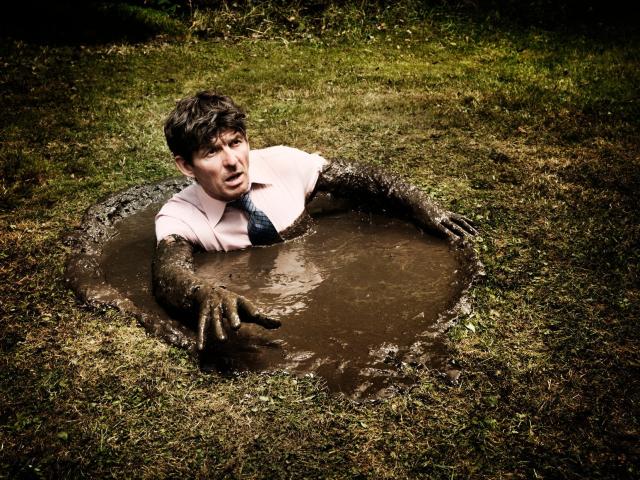Science Daily News | 05 Jun 2023

Views (101)

A lost medieval city that legend says was swallowed by the sea as punishment for its carnal sins mapped for the first time
The legend of the lost city of Rungholt, in Germany, says a great storm in 1362 destroyed it as revenge for its inhabitants' sins.

The legend says that the city of Rungholt was destroyed as revenge for its inhabitants' sins.
The remains of the "northern Atlantis" have now been charted off the coast of Germany.
Researchers say such finds provide unparalleled insights into the lives of the North Frisian people
Archaeologists have mapped out the lost city of Rungholt for the first time.
So the stories go, the life of abundance led to an immoral life, and the end came around Christmas when a gang of young drunkards tried to force a priest to give a pig the last sacrament at a local inn.
The cleric went to the church and prayed and asked God to punish the young men. He left town the next day, and shortly after, the great storm hit that wiped Rungholt off the face of the Earth.
In medieval legends, the sound of its bell tower could be heard from the depths of the North Sea.
While some historians questioned whether the town ever existed outside myth, new research has uncovered the remains of this "northern Atlantis" in the Wadden Sea, per the report.
Archaeologists from Christian-Albrecht University in Kiel found approximately 1.2 miles series of medieval mounds around an island now known as Südfall after mapping the site with a geophysical survey.
The press release says that investigations into the tidal flats continued to "bring to light significant new finds" and provided unparalleled insights into the lives of the North Frisian people.
But the researchers are working against the clock, as the conditions continually eat away at the remains.
"The medieval settlement remains are already heavily eroded and often only detectable as negative imprints," Hanna Hadler, who works at the Institute of Geography at Mainz University, said.
"So we urgently need to intensify research," she added.
How to escape quicksand. Whatever you do, don't panic!
Humans can't drown in quicksand, because we float in it. Getting out can be simple if you follow these instructions.

If you get stuck in quicksand, remember it's impossible to drown in the stuff.
Instead, calmly try freeing yourself by gently kicking your legs back and forth.
This should loosen the dense sand around you, allowing you to pull yourself free slowly.
If you find yourself stuck in quicksand, the first thing to remember is not to panic.
Quicksand is not like how Hollywood traditionally portrays it. You're not going to drown.
In fact, most quicksand pools are only a few inches to a few feet deep. Moreover, it's impossible to drown in quicksand because humans float in it. That's because our body's density is lower than the quicksand's, "Extreme Encounters" says.
"In normal sand, grains are packed tightly together to form a rigid mass, with about 25 to 30 percent of the space (voids) between the grains filled with air or water," SciAm reports.
But if the sand's shape is more elongated than spherical, it can increase those voids from 30 percent up to 70 percent.
"This arrangement is similar to a house of cards in that the space between the cards is significantly greater than the space occupied by the cards," per SciAm.
As a result, the sand looks solid on the surface but is very pressure sensitive and can easily collapse, causing the surface to sink beneath your feet.
What makes quicksand so dangerous is its viscosity. Once disturbed, quicksand becomes much more viscous, trapping whatever it envelops. Here's how to get out:
Instead, if possible, try making small back-and-forth motions with your legs, which should loosen the sand around you. Lose your shoes if you have to.
Next, if you're not too deep, you can try lying on your back. The more you distribute your weight across the surface, the harder it will be to sink farther. Then you can try backstroking your way free.
Roll away from the quicksand once you reach solid ground, and you should be clear of the sticky situation.
Another tip is to never enter quicksand territory without a stick or pole. You can rest the pole on the quicksand's surface, ease your weight, and slowly shimmy your way out, per "Extreme Encounters."
Watch the original video here:
Zapping a rodent's brain can put it into suspended animation. Scientists want to one day use the same technique for humans traveling to Mars.
Sending ultrasound signals into rodent brains puts them in a torpor, scientists found, prompting hope the same technique could be used in humans.

Scientists have zapped mice and rats into a suspended-animation-like state called torpor.
The state was induced by beaming ultrasound waves into a precise spot in the rodent's brains.
This technique could one day be used on humans for space travel and medical purposes.
Scientists have been able to induce a torpor state in mice and rats using ultrasound, bringing them a step closer to finding a way to induce suspended animation in humans.
They hope this could one day save on energy and costs of long-haul space travel to planets like Mars.
"We could envision astronauts wearing a helmet-like device designed to target the hypothalamus region to induce a torpor-like state," she said.
Torpor is a state of suspended animation whereby animals may look like they are going to sleep, but they are actually drastically reducing their metabolic activity, usually in response to extremely adverse conditions.
Mice and rats were fitted with tiny helmets to send ultrasonic waves to the brain. The scientists observed that these waves were effectively able to push the rodents into a state of torpor.
For about an hour after the ultrasound pulse, the mice's body temperatures and metabolism dropped, a state similar to torpor seen in nature. The mice's average body temperatures dropped by up to 6.25 degrees Fahrenheit (3.5 degrees Celsius) and their heart rate and oxygen usage dropped as well.
The rats' body temperatures also dropped, though to a lesser level, up to 3.57 F (2 C).
The fact that this state was triggered in rats is encouraging, as these rodents "do not naturally enter torpor, suggesting the possibility that similar effects could be induced in humans," the scientists said in the study.
For Spaceworks, astronauts would be induced into torpor for 14 days at a time and woken for three or four days. That way, there would always be an active astronaut on shift to monitor proceedings.
The rapid progress in the basic science to support this innovation is encouraging.
Other studies, like this recent one, suggest hacking the brain's dormant torpor mechanism to induce this state. Previous studies had suggested torpor could be induced with drugs, but the advantage of the approach in this recent study, is that it is noninvasive, precise, and safe, scientists said in the study.
"As far as we know, there is nothing unique about homo sapiens that would prevent our species from hibernating, and I believe the capacity is there but it needs to be unlocked," Vladyslav Vyazovskiy, professor of sleep physiology at the University of Oxford, told the BBC.
"To me, the real question is not whether we can hibernate, but how… How do neurons in the hypothalamus 'know' that it is time to hibernate? Who tells them? This is the real question," he said.
Nevertheless, most of the research into long-ranging suspended animation is still only being done on animals, and we're likely still a long way away from testing it on humans.
"Further research is still required to determine the safety and feasibility of this approach in humans," Chen told Live Science.
0 Likes
